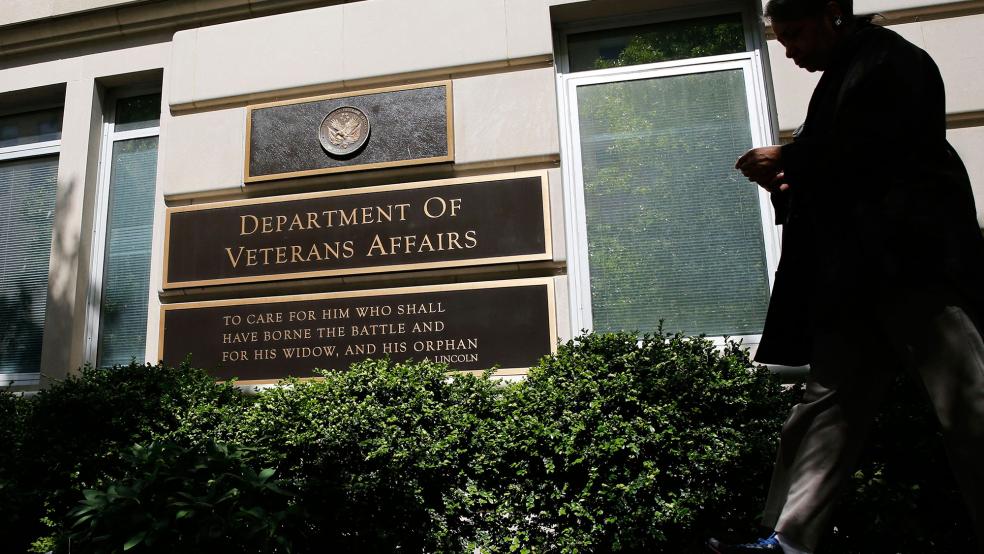A new scandal at the Veterans Administration has brought to the forefront all of the issues of accountability and performance of government bureaucracies in health care. The Inspector General’s report following up on the allegations of wait-list fraud and preventable deaths of dozens of American veterans provides a confirmation of the worst possibilities of federal monopolies on health care, and an indictment of the Obama administration’s executive competence.
The US manages three single-payer health systems: the military’s own health-care network, the Indian Health Service, and the Veterans Administration. The Indian Health Service has long been an embarrassment to the Department of the Interior for its substandard care and lack of access for those living on reservations.
Related: Senate Dems Block Bill to Make Firing VA Execs Easier
Even as Congress launched the effort to pass the Affordable Health Care Act in mid-2009, the Associated Press reported that IHS spent only two-thirds per capita on health care for Native Americans than federal prisons did on felons. “On some reservations,” the AP noted, “the oft-quoted refrain is ‘don’t get sick after June,’ when the federal dollars run out.” Congress did nothing to fix IHS while pushing the ACA to approval despite popular opposition to the proposal.
The Department of Defense system came under heavy criticism during the final two years of the Bush administration. The Washington Post ran an expose´ in February 2007 on the crown jewel of the network, Walter Reed National Military Medical Center, citing patient neglect and poor living conditions. The scandal cost one general his job, and once again highlighted the lack of accountability in the single-payer systems run by government.
The VA, however, was supposed to be different. Slate’s Timothy Noah wrote in 2005, “socialized medicine has been tried in the United States, and it has been proven superior to health care supplied by the private sector.” New York Times economic analyst Paul Krugman wrote a series of columns over the last several years extolling the single-payer VA system.
In 2011, Krugman scolded conservatives for seeking a private-sector replacement for the VA, claiming, “No amount of evidence can shake that credo” on the right, and in 2006 arguing that the single-payer, government-run VA “represents the true future of American health care.”
Related: Obama Says He Will Get to the Bottom of Veterans Mess
The actual evidence transforms that argument from an endorsement to a warning flag. Responding to an avalanche of whistleblowers that started in the VA’s Phoenix office and expanded to at least 26 facilities nationwide, the Inspector General at the Department of Veterans Affairs conducted an independent investigation of wait-list fraud and the impact it has on care for veterans.
On Wednesday, the IG issued a damning interim report, and not just about the Phoenix facility where 40 veterans died while waiting to be scheduled for care. The IG also looked into other allegations of wait-list fraud, and “confirmed that inappropriate scheduling practices are systemic throughout VHA.”
The probe found not just one but four common methods of committing fraud. The first was the simplest – the scheduler simply marked the scheduled appointment time as the requested date from the patient at the time of request, resulting in a false zero-day wait for the appointment. The second method identified schedulers whose average wait times exceeded 14 days, and had them retroactively change the desired date to the appointment time to improve their scores.
A third method deleted consultation appointments with wait times that exceeded 90 days, sometimes without checking to see how badly the patient needed the service. The fourth method took advantage of a flaw in the system where reentering the appointment data would cancel the previous entry without any audit trail, allowing the true wait time to be concealed.
Related: GOP Revs Up for Campaign Push on VA Scandal
The results of this fraud in Phoenix were impressive, and staggering. Officially, the Electronic Wait List (EWL) for Phoenix in 2013 showed an average wait time of 24 days for service, with 43 percent of the 226 veterans on the EWL waiting more than 14 days. After the IG unspun the fraud, the EWL wait time metrics turned out to be an average wait time of 115 days – nearly four months – with 84 percent of veteran having to wait more than 14 days.
What did this gain the local and regional offices? The IG office has its suspicions. “A direct consequence of not appropriately placing veterans on EWLs,” the report concluded, “is that the Phoenix HCS leadership significantly understated the time new patients waited for their primary care appointment in their FY 2013 performance appraisal accomplishments, which is one of the factors considered for awards and salary increases.” The VA paid an $8,495 bonus to the director of the Phoenix VA for 2013, which VA Secretary Eric Shinseki revoked last week.
However, the wait list data was not the worst of the findings in the report, because at least these veterans were on the wait list and had an appointment scheduled in the system. Thousands of veterans ended up in a shadow status that couldn’t be tracked at all. Fourteen hundred veterans had entries in the EWL but no appointments, even though they requested medical attention, while another 1,700 didn’t make it into the system at all.
The IG had to parse through paper records and offline data to establish the true scope of the fraud. The risk with these 3,100 veterans wasn’t just that the quality of service provided couldn’t be measured, but more that they are at serious risk of not getting any care at all. “As a result [of the fraud], these veterans may never obtain a requested or required clinical appointment,” the IG interim report concludes.
Related: Whistleblower Says Two Killed Themselves Waiting for Treatment
In no other organizational structure except a government-run single-payer system would this take place. If these veterans had a choice of where to seek medical care, they would not have abided average wait times of 115 days to see a doctor, let alone waiting months just to show up on a wait list in the first place. Only the lack of all other options kept these veterans trapped in the nightmare of VA systems, in Phoenix and around the country.
Only in a government-run system like this would fraud have gone undetected by executive management, because customers would have walked out long before circumstances reached the extremis discovered by the IG.
Let’s not forget, too, that VA executives in the Obama administration have been repeatedly warned – in the transition in 2008, and in writing in 2010, and 2012 – of wait-list fraud, and did nothing about it. Even now, no one has been held accountable for the massive failure and fraud that may have costs the lives of dozens of veterans.
If health care “reform” continues to move in the direction of greater government control and fewer consumer choices, then Krugman may be right that this is “the true future of American health care.” That’s the best argument of all for ending single-payer systems in the U.S., and getting the federal government out of the health care management industry.
Top Reads from The Fiscal Times:






